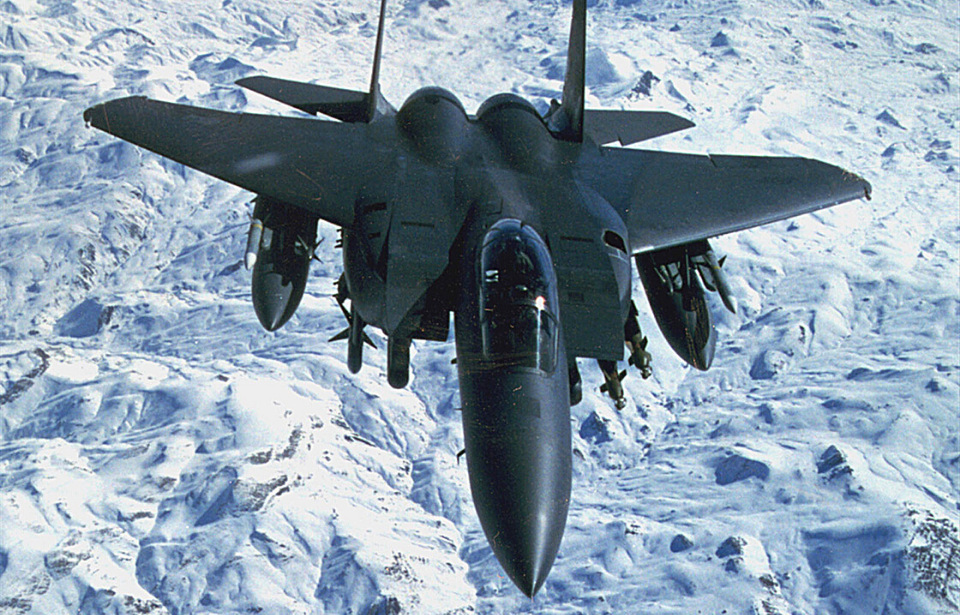The McDonnell Douglas F-15 Eagle is a twin-engine fighter aircraft that has served the US Air Force for decades. Entering service in 1976, the F-15 has maintained its role as the Air Force’s primary tactical fighter due to its unmatched capabilities and success. Variants allow for different functions to excel in any battle situation, keeping the aircraft both versatile and effective.
The F-15 has a pretty impressive history. Its record in combat is 104 to 0, meaning no enemy combatants have claimed a kill. As well, the Air Force developed an anti-satellite missile – the ASM-135 ASAT – that was successfully deployed by an F-15 piloted Maj. Wilbert D. “Doug” Pearson Jr., destroying the Solwind (P78-1) satellite.
Vietnam proved a need for this type of aircraft
After the Vietnam War, it was obvious the Air Force needed to develop a maneuverable airframe that could engage with enemy fighters while also evading surface-to-air missiles (SAMs). Work quickly began on the F-15 Eagle, and the aircraft was developed with improved radar and missiles, and even equipped with a gun.
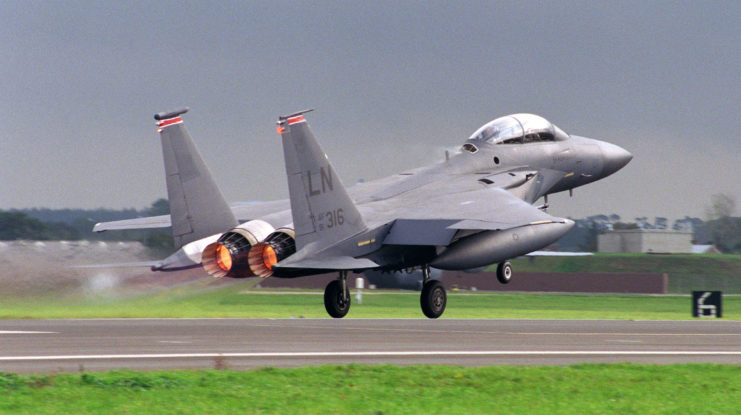
The F-15 was also made to be super fast. Unlike its successor, the F-22 Raptor, which can reach a maximum speed of just over 1,400 MPH, the F-15 is capable of reaching a speed of more than 1,800 MPH. The aircraft can also shoot off at almost a 90-degree angle and maneuver without losing speed, thanks to its thrust-to-weight ratio, meaning it is not only fast, but incredibly agile.
The improved specs of the F-15 Eagle
The F-15 Eagle boasts a great deal of improved equipment and capabilities when compared to its predecessors. The aircraft can carry more missiles, ground bombs and fuel, and is more technologically advanced, giving it an overall edge in the sky.
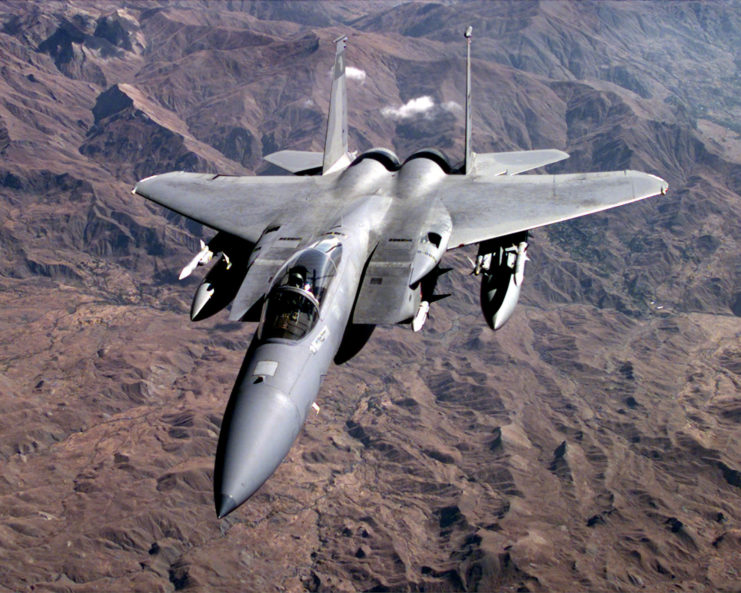
One of the most impressive improvements is the F-15’s head-up display, which projects on the windscreen all of the essential flight information and allows the pilot to track and attack targets without having to look down into the cockpit. It also has an adaptable light function that provides perfect clarity and visibility in any light condition, making day or night missions a breeze.
Other improved technologies include advanced radar, inertial and tactical navigation systems, an electronic-warfare system, an electronic countermeasures set and ultra-high frequency communications, just to name a few.
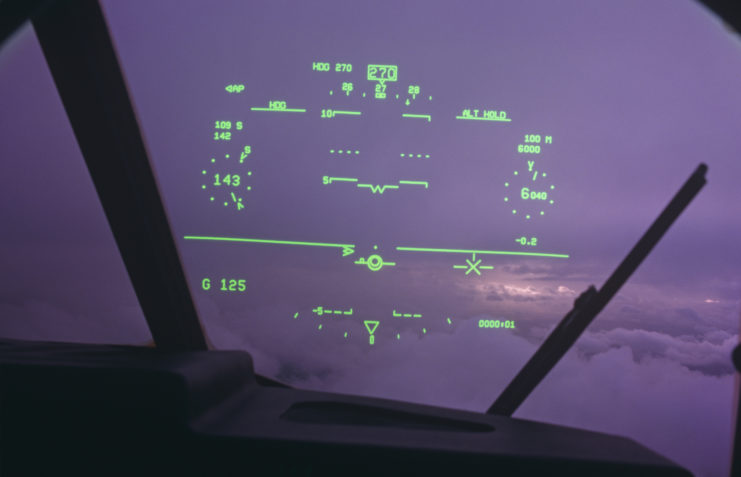
Accompanied with an M61 Vulcan 20 mm Gatling-style rotary cannon and an array of short- and medium-range air-to-air missiles and ground munitions, the F-15 is a force to be reckoned with. In fact, Maj. Rhory “Hoser” Draeger, following the Gulf War, said, “Realistically, compared to any other aircraft in the world, it would be real hard to improve on the F-15.”
Versatility of the F-15E Strike Eagle
The F-15E Strike Eagle is the two-seat, dual-role variant of the F-15. It’s an all-weather fighter for air-to-air combat and deep interdiction missions. Onboard are the pilot and weapon systems officer, and the improved avionics of the F-15E allow the pilot to detect, target and engage with air-to-air targets while the weapon systems officer simultaneously designates the ground target.
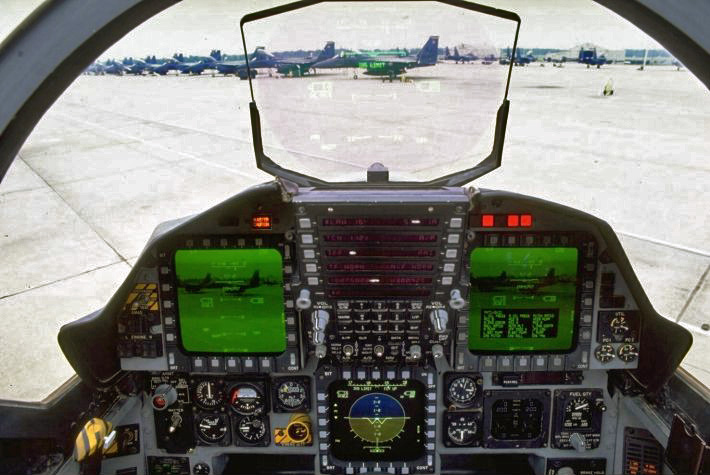
Additionally, the F-15E is capable of accelerating from idle power to maximum afterburner in less than four seconds. That is a 40 percent increase over the previous engine control system, thanks to the two Pratt & Whitney F100-PW-220 or -229 engines that power the aircraft. As well, these engines produce between 50,000 and 58,000 pounds of thrust.
Use of the F-15 Eagle in the Gulf War and beyond
When the US launched Operation Desert Storm in 1991, the Air Force made excellent use of the F-15 Eagle, deploying the C, D and E variants. Throughout the duration of the Gulf War, the fighter aircraft is credited with winning 36 of the reported 39 US air-to-air victories against the Iraqi forces (some sources say the total is 34, with the overall number of US victories capped at 37).
While the F-15C and D were used to show air superiority, the F-15E Strike Eagle conducted nighttime air-to-ground attacks.
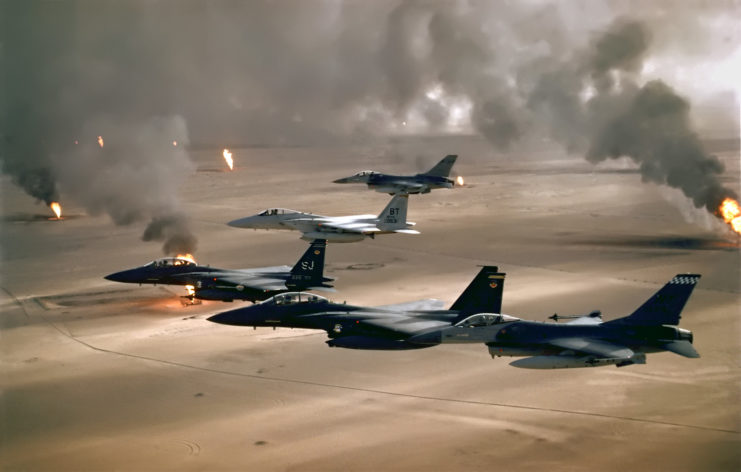
More from us: Here’s Why the Russian Sukhoi Su-27 Has Withstood the Test of Time
Since the Gulf War, the F-15 has been used in numerous other missions, including in support of Operation Southern Watch in Iraq and Operation Provide Comfort in Turkey. The aircraft also aided in NATO operations in Bosnia.
Outside of the US, the aircraft has been operated by the Israeli, Japan and Saudi Arabian air forces, with the latter making use of the F-15 throughout the ongoing Yemeni Civil War.
